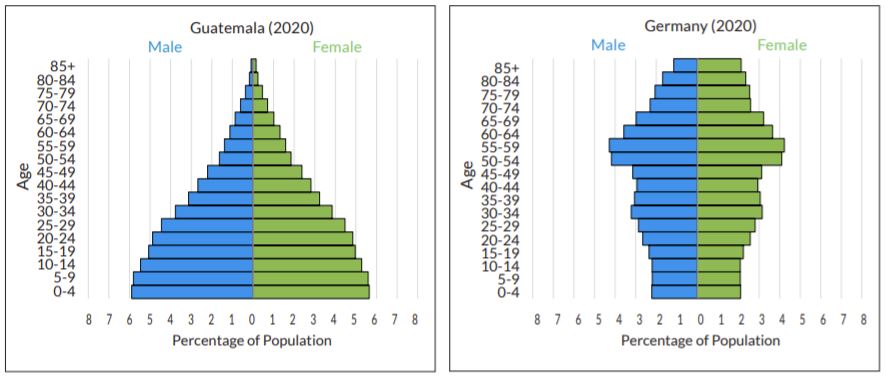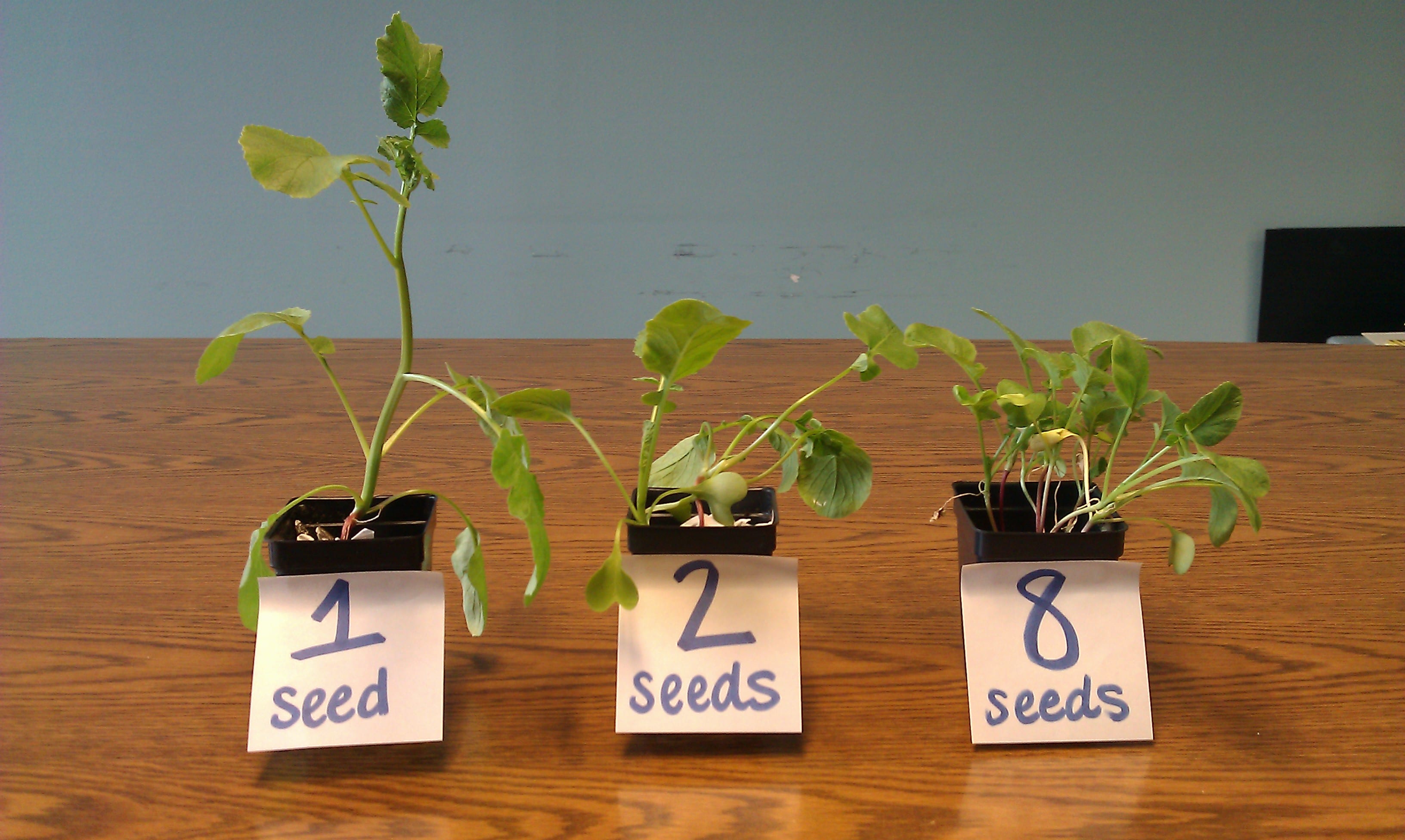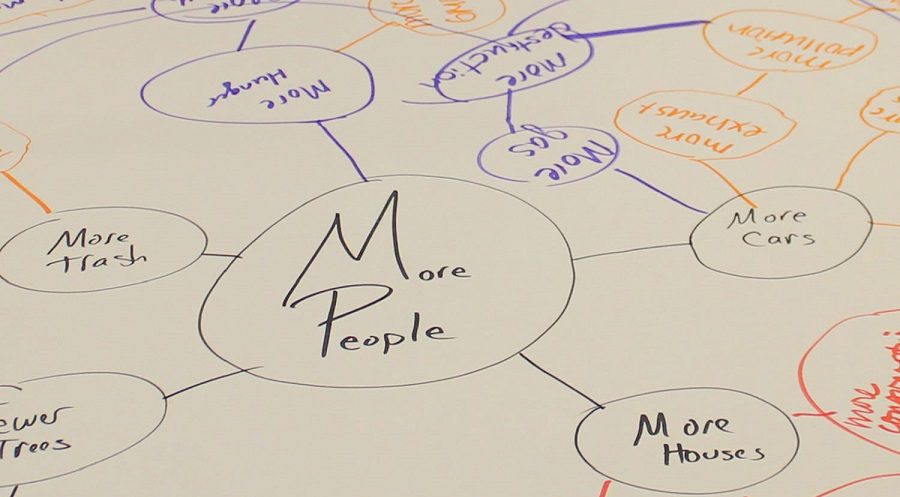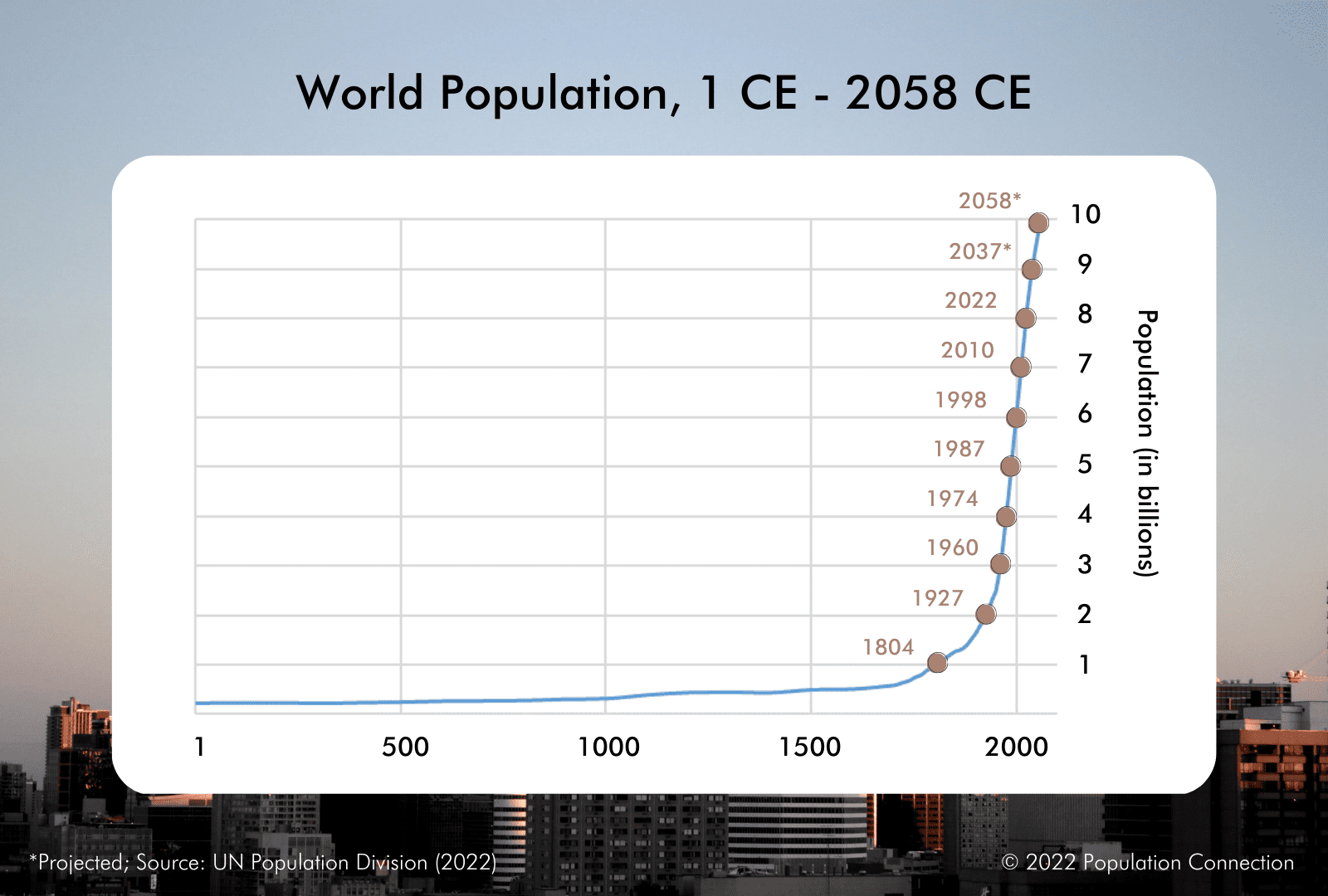As 2022 comes to a close, we’re taking a look at which Population Education teaching resources were most popular over the course of the year.
There is quite a range in grade levels, from early childhood lessons up to high school AP favorites; this is not surprising given PopEd’s focus on age-appropriate teaching materials for all grades.
The topics of our most popular resources cover a variety of human ecology themes like carrying capacity, population density, and population pyramids, as well as environmental themes like water distribution and land use.
The Most-Downloaded Teaching Resources from 2022 – Top Ten
1. Power of the Pyramids
The activity Power of the Pyramids has students create and analyze age structure diagrams for six countries. It’s a favorite of APES and APHG teachers who are required to cover population pyramids, and is also a wonderful opportunity for real-world math.
2. Food for Thought
In the lesson Food for Thought, students compare demographics and other health and well-being indicators like literacy rate, levels of education, access to doctors, and urbanization rates all while “populating” five major world regions. Then they consider regional wealth and energy use statistics by seeing representations of wealth (Hershey Kisses representing per capita GDP) and energy (matches representing per capita energy use).
3. Crowding Can Be Seedy
Kindergarten, 1st and 2nd grade teachers love the activity Crowding Can Be Seedy for its kinesthetic approach and its connections with ELA and math. Students first pretend to be plants growing in an imaginary flower pot before planting radish seeds and observing real plant growth. How does the density of the plants impact their ability to survive and thrive?
4. Water, Water Everywhere
Students learn how Earth’s water is distributed by watching a demonstration that divides 1,000 mL of water into cups and creating a 2-D representation on a strip of adding machine tape. In the second part of Water, Water Everywhere, students conduct a water audit to find how much water they use daily.
5. Population Riddles
Three Population Riddles help students with mathematical concepts common to population studies: the significance of large numbers, exponential growth, and doubling time.
6. Panther Hunt
Panther Hunt is a lively simulation that models a predator-prey relationship. The activity also allows students to consider the connection between a living thing and the resources it depends on for survival, as well as carrying capacity. Though written for middle grades, the lesson plan is easily scalable and a favorite of high school Biology and Environmental Science teachers.
7. Everything is Connected
The lesson Everything is Connected (and its elementary counterpart More or Less) is flexible, dynamic, and easy to facilitate. Students create a word web around the central idea of ‘More People’ that shows possible social, environmental, political, or economic effects of an increasing population.
8. Take a Stand
Take a Stand is another lesson that can be used in a wide variety of settings, to teach a wide variety of topics. A riff on the traditional 4-corners activity, students will create arguments and defend their opinions on topics like climate change, immigration, and workers’ rights.
9. The Human Footprint: Land
The only student reading to make the top ten list, The Human Footprint: Land discusses how population growth impacts wild areas, arable land, and resource use. Written at a middle school level, it provides your 6th, 7th, and 8th graders an opportunity to analyze how our land use impacts habitats and ecosystems while exploring ways to preserve land resources.
10. Population J-Curve Graph
Recently updated with data from the UN’s 2022 World Population Prospects, the downloadable world population j-curve graph shows population from the year 1 to present, and out to 2058 when global population is projected to reach 10 billion.







